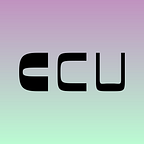Behind The Screens: Digital Selves
An interview with electronic musician Digital Selves.
Lizzie (Digital Selves) is an electronic musician who makes music by livecoding. In this interview, we’d like to talk about her practices and tools, as well as work in the community and the way she copes with the radical and drastic changes in their practice resulting from the corona crisis.
- What was your first encounter with live coding and what are your sources of inspiration?
My very first encounter with live coding as most people know it was fellow live-coder Joanne Armitage rocking up to a house party with a Waldorf synth and Supercollider and baffling and inspiring everyone there. I went to my first “algorave” in Leeds in 2017 and Alex McLean’s set there was what prompted me to get into Tidal I think. Although, I used to be into origami as a child, which is maybe when I first started being interested in creating things through algorithmic patterns.
2. What are your preferred platform(s) to use and why?
I mainly make live coded music using the TidalCycles (Tidal) algorithmic pattern language. I like making music with Tidal because it is simultaneously complex and easy: intricate patterns can be constructed through its well of functions and transformations using only a few keystrokes. I’ve also started using some programmes for visuals too in the past year or so, mainly Hydra and Marching.js, although recently I’m dipping into blender and shader languages when I can.
3. Are there any platforms, tools or extensions that you develop yourself and if so can you elaborate why and for what purpose?
I got to work with Alex McLean last summer on developing a Haskell-based agent that writes its own Tidal Code. That was really fun, although it’s still a bit of a work in progress, I hope it’s something I can use in a performance at some point. The idea is that it can help you combat the “creative un-inspiration” rut we can all get into, getting the machine to provide you with ideas you might not be able to conceptualise yourself.
4. How has live coding influenced your practice of making and thinking about art?
Before I got into live coding, I’d only just started making music in the regular DAW (Digital Audio Workstation) that most electronic musicians use (Ableton). DAWs are powerful tools, but I find they’re pretty limiting creatively, especially for someone starting out. The workflow of creating a loop, and copy and pasting and tweaking manually didn’t resonate with me and you become very beholden to the tool. Expressing ideas through language gives you a lot more creative freedom.
Also, I never found a community behind more “traditional” ways of electronic music making the same way there is with live coding. I think community is such an overlooked part of making music- to me, all music is the product of a community rather than an individual.
5. In what form are randomness or other algorithms applied in your practice or performance? Do you try to pursue serendipity and how or why not?
I think randomness is something that live coding has been incorporating more than most “traditional” musical domains, and it’s interesting to see there’s a shift towards this now- some newer software has now got more focus on indeterminism. In incorporating randomness into music, it becomes more of a dialogue between you and your machine, rather than you exactly giving instructions and the computer having no say in the final outcome. This is something I want to keep exploring; how we can create these symbioses between us and our machines. There’s also something almost cathartic about using randomness in a live set that exists in the ether for half an hour, and that could never be recreated in the same way, creating a unique experience between you and the audience.
6. Could you share a sneak-peek into any upcoming projects or things you are currently working on?
I very recently released an EP on in.unison - an internet label searching for new means of communicating through visuals and sound. I’ve been enjoying writing songs rather than live sets recently. There’s something satisfying about the permanence of them and being able to create these digital artefacts that take a snapshot of the random processes that go on behind the scenes.
— — —
This article is part of the Behind The Screens series of Creative Coding Utrecht — a series of events where digital artists and live coders create a piece in ten minutes.
Watch Season 1 // Watch season 2 // More interviews
The Behind The Screens series is sponsored by Stimuleringsfonds Creatieve Industrie.
